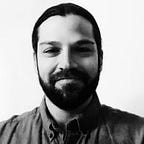Concrete Conversations
Ancient Beginnings
“Nothing is built on stone;
all is built on sand,
but we must build as if the sand
were stone.”
Jorge Luis Borges
On an unremarkable avenue, in a Texas town once known for cattle herding, sit a trio of buildings designed by three of the greatest Architects of the 20th century. Merely the names — Louis Kahn, Tadao Ando, Renzo Piano — draw hundreds of thousands of visitors to the street every year. The tourists, many of them Architects themselves, come to marvel, to sit and sketch, often ignoring the art the buildings house to observe with awe these architectural achievements they have read so much about in books, poured over in magazines and listened to professors speak of ad nauseum in lectures.
The original masterpiece, the Kimbell Art Museum by Kahn, sits in the center. Its ideas echo into the other buildings, creeping into their structure and rhythm like invisible ivy. When one enters the most recent, Piano’s addition of the Kimbell, there is the sense of being in a space of unspoken deference. The entire building, from its repeating hundred-foot module to the recessed entry that faces the elm grove, references Kahn’s 1972 masterpiece.Piano’s addition carries a language of respect and humility, of being spoken to without speaking. Never does it seek to one-up Kahn or even engage him as a peer. Piano may not have had much of a choice; when the previous expansion proposal was unveiled it was met with a chorus of anguished editorials, outrage and such fierce opposition it was eventually scrapped and not revisited for twenty some years. To take on a building as revered in the halls of academia and the profession as the Kimbell, as well the critics and tastemakers who insist on preserving the original intent of the creator, one may well expect from the beginning to acquiesce. And so Piano’s addition sits comfortably out of reach of the original building, toothless but providing the critical surplus gallery and gathering spaces the museum directors must have craved for quite some time.
The same cannot be said for Tadao Ando and his Modern Art Museum of Fort Worth. Ando, a boxer in a prior vocation, has likened the architects in his office to guerillas facing inevitable destruction. He is sincere in his effort to engage and challenge his hero Kahn. “To make architecture is to make war,” Ando says, sitting barefoot and cross legged in the attic of his wooden home in Osaka, “the only difference is that in Architecture there is no victory.” While Piano’s addition shares a lawn with Kahn’s Kimbell, Ando’s modern sits adjacent to it, a street separating them like a referee between two brawlers. Completed in 2002, Ando’s building did not have the limitations of Piano’s, lacking an association with the Kimbell museum as well as liberation from the rigors of displaying traditional art. The result is Kahn’s Kimbell cracked open. Reacting to Kahn’s carefully crafted slivers of light that pierce through recessed and hidden glass, Ando’s building is defined by massive glass facades forty-feet-tall that let in all the light that wishes to enter. It’s a feint though, a carefully laid trap to bring the sun in and manipulate it once it’s through with opaque walls of smooth, perfect concrete.
For both Kahn and Ando, concrete is the material of choice. It is a substance often viewed by the general public with disdain, if they even notice it at all. Its presence is so widespread — at the dawn of the 21st century it was the second most common material on earth after water — it has become invisible to most, never catching the eye like twisted titanium or reflecting the world like a tower of glittering glass. While it may be ubiquitous, concrete is also ancient, used in buildings over 8000 years ago and leveraged by the Roman empire in their arches, vaults and domes. It’s primary ingredient cement — the glue that holds everything together and causes concrete to cure and harden (an alchemical process still provoking research in the 21st century) — originated in a cosmic event reminiscent of the big bang, coming into existence twelve million years ago when an oil shale bordering a bed of limestone erupted and resulted in its birth. If nothing else, concrete carries within itself the history of humanity.
A sense of what it means to bring history into a building is something Kahn and Ando share. Neither is as interested in the formal aspects of tradition as they are in the essence of what has been historically evoked. The vaults that define Kahn’s Fort Worth masterpiece are broken at their center, inspired by the Pantheon’s dome and its similarly central opening. Rather than style it is the wonder of emptiness where solidity seems most necessary that Kahn focuses on imitating. Ando’s weapon of choice is monolithic mass, the opposite of traditional Japanese construction. Yet through refined methods and precise natural lighting the ephemeral effects of paper-thin shoji screens arise in his walls, contradicting their material state as well as the logical assumptions of the visitor. It is the Architects’ own histories they reference as well, their evolutions from inchoate wooden structures to the elegance they have put forth with liquid stone. In the Kimbell and the Modern, frozen in the hardened concrete like ancient insects in amber, are the ideas and concepts the two Architects have spent a lifetime wrestling with and perfecting. And so it is that Kahn and Ando, through the artifacts they have left behind in the blistering Texas sun, engage in a conversation using the most common of materials, elevating it into something extraordinary in the process.
Dan Edleson is the Principal of STEREO, a Building Information Modeling firm focused on Digitizing existing building conditions, and ZUN, a firm focused on Ecological Optimization of Buildings.
